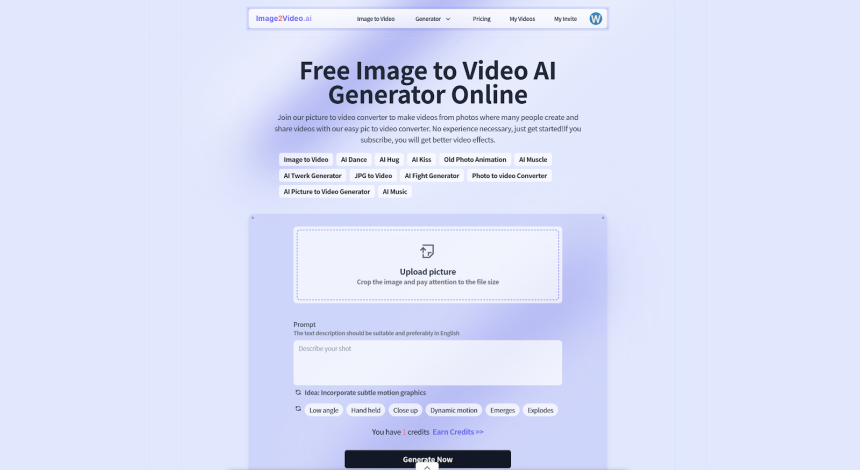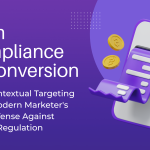You’re a storyteller. You see the world in moments worth capturing—the triumphant smile at the finish line, the quiet understanding in a lover’s gaze, the uninhibited joy of a child at play. Your phone and camera are filled with these moments, a gallery of powerful, static images. But in a world that communicates through motion, do you ever feel like your stories are trapped behind glass, unable to express their full emotional depth?
But what if the only skill you needed to direct a video was your own imagination? What if you could command your photos to come alive, simply by describing the story you want to tell? This is not a far-off dream; it’s the reality of Image to Video AI, a technology that is fundamentally democratizing creativity and putting the power of a professional animation studio directly into your hands.
A Picture is Worth a Thousand Frames
For over a century, a picture was worth a thousand words. Today, a single picture can be the seed for a thousand frames of video. Think of photo to video AI as the ultimate creative co-pilot. It doesn’t just add a filter or a simple zoom effect. It acts as a narrative engine, analyzing the content and context of your photograph to build a believable, moving scene.
This technology uses a sophisticated understanding of human anatomy, emotion, and physics. It recognizes the potential for movement in a static pose. It sees the story waiting to be told in a shared glance. This is how it can take a simple photograph and, based on your direction, create a seamless animation. Imagine transforming a portrait into a tender kiss scene, a group photo into a warm hug, or a fitness snapshot into a display of muscle and strength. The AI doesn’t guess; it intelligently constructs the motion you envision.
The Before-and-After Bridge: Your Creative Journey
The transformation from a static image to a living video is a powerful narrative in itself. It’s a journey from a memory that is passively observed to one that is actively experienced.
Before: The Frozen Moment
You have a photo from a concert. The lights are spectacular, the energy is palpable, but the image itself is silent. It’s a great photo, but it doesn’t convey the feeling of the music, the roar of the crowd, or the passion of the performance. It’s a memory frozen in time.
The Bridge: The Power of Your Words
Now, you upload this photo to the AI platform. Instead of wrestling with timelines and keyframes, you are presented with a simple text box. This is your director’s chair. You type your vision: “The singer belts out the final note, head tilted back, fist in the air.” You are providing the narrative spark.
After: The Resurrected Experience
In less time than it takes to choose an Instagram filter, the AI processes your command. The static image of the singer animates into a powerful, fluid motion. You see the passion in their expression, the triumphant gesture, the very energy you remember from the event. You haven’t just created a video; you’ve resurrected an experience. You’ve built the bridge from a silent photo to a story that sings.

The Creator’s Advantage: Why AI is the Ultimate Tool
For anyone looking to create content—be it for personal connection or professional growth—the efficiency and power of this technology are undeniable. It offers an unparalleled advantage over the slow, expensive, and complicated methods of the past.
| Metric | Image to Video AI | Traditional Editing Suite | Hiring a Freelancer |
|---|---|---|---|
| Speed | Near-Instant: From concept to completion in under a minute. | Painfully Slow: A few seconds of animation can take hours or days. | Days to Weeks: Dependent on communication and revision cycles. |
| Skill Requirement | None: Your imagination is the only skill you need. | Expert Level: Requires extensive training in complex software. | Management: Requires finding, vetting, and managing talent. |
| Cost | Freemium Model: Accessible to everyone, with affordable scaling. | High Subscription Fees: Often $50/month or more, plus hardware costs. | Expensive: Professional animation can cost hundreds or thousands of dollars. |
| Creative Control | Total Narrative Control: You are the director, the AI is your artist. | Total Technical Control: But you must execute every single detail manually. | Indirect Control: Your vision is filtered through another person’s interpretation. |
| Personalization | Deeply Personal: Uses your own photos, your own memories, your own brand. | Fully Custom: But built from scratch, lacking an authentic starting point. | Custom, but Impersonal: Created by an outsider to your experience. |
| Iterative Process | Effortless: Don’t like the result? Tweak your text and regenerate in seconds. | Labor-Intensive: Minor changes can require significant rework. | Slow and Costly: Revisions often add time and expense to the project. |
Your First Masterpiece: A Three-Step Guide to Animating Reality
Stepping into the role of a video creator has never been easier. Here’s how you can bring your first photo to life.
Step 1: Select Your Canvas
Choose a photograph that holds a story. It could be a cherished memory, a powerful brand image, or a piece of digital art. This image will be the foundation of your animated creation.
Step 2: Become the Director
This is where your creativity takes center stage. Using a simple text prompt, describe the scene you want to create. Be descriptive. Be emotional. Tell the Image to Video AI the story locked within your photo. For example, instead of “make them move,” try “they look at each other and share a gentle, loving smile.”
Step 3: Unveil Your Story
With a single click, the AI gets to work. It interprets your words and meticulously animates your photograph according to your vision. In moments, you will have a unique, high-quality video, ready to be downloaded and shared with the world.
The New Era of Storytelling is Here
Image to Video AI is more than just a fun tool; it’s a paradigm shift. For individuals, it’s a way to connect more deeply with memories and share them in a more impactful way. For marketers and brands, it’s a revolutionary way to produce custom, eye-catching content at an unprecedented scale and speed. For artists, it’s a new medium to explore, blending the static and the dynamic in ways never before possible.
The barriers that once stood between your vision and a finished video have crumbled. You no longer need a Hollywood budget, a team of animators, or years of technical training. All you need is a memory, an idea, and the desire to tell your story. The future of content is personal, dynamic, and instantly accessible. Your stories are waiting. It’s time to let them move.
Lynn Martelli is an editor at Readability. She received her MFA in Creative Writing from Antioch University and has worked as an editor for over 10 years. Lynn has edited a wide variety of books, including fiction, non-fiction, memoirs, and more. In her free time, Lynn enjoys reading, writing, and spending time with her family and friends.















